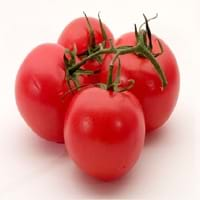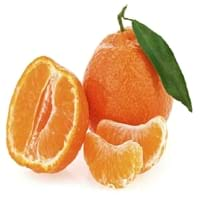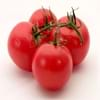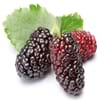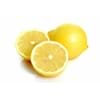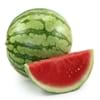Benefits
Health Benefits
Anti depressant, Cancer prevention, Heart care, Muscle pain relief, Prevents constipation, Regulation of heart rate, Weight loss properties
Cancer prevention, Heart care, Increases metabolic rate, Reduces stress
General Benefits
Controls blood pressure, Eye care, Maintains healthy cholesterol level, Strengthens bones
Boosts immune system, Controls blood pressure, Digestive aid, Eye care, Helps in weight loss
Skin Benefits
Anti-aging benefits, Heals sunburn, Skin rejuvenation, Treatment of acne, Treatment of skin diseases
Brightens and lightens complexion, Treatment of acne, Treatment of dark spots
Hair Benefits
Good conditioner, Prevents hair loss, Softening mask
Promotes longer and healthier hair, Protects hair
Allergy
Allergy Symptoms
Anaphylaxis, Coughing, Diarrhea, Eczema, Hives, Itching sensation in throat, Nausea, Skin Rashes, Runny nose, Sneezing, Swelling of mouth, tongue or lips, Vomiting, Wheezing
Abdominal pains, Breathing difficulty, Coughing, Diarrhea, Drop in blood pressure, Fainting, Runny nose, Skin rash, Sneezing, Swelling of mouth, tongue or lips, Vomiting
Side Effects
Heart burn
Allergic reaction
Recommeded for
Pregnant Women
Yes
Yes
Lactating Women
Yes
No
Best Time to Eat
Along with meal, Don't consume at night and before bed, Morning time (before lunch)
As a snack in the late afternoon, Don't consume at night and before bed, Eat the fresh ones, avoid mixing with any other foods, don't eat after meal., Morning time (before lunch)
Nutrition
Serving Size
100 g
100 g
Carbs
3.90 g
99+
12.02 g
99+
Fiber
1.20 g
34
1.70 g
29
Sugar
2.60 g
99+
9.18 g
27
Protein
0.90 g
30
0.85 g
33
Protein to Carb Ratio
0.23
5
0.08
18
Vitamins
Vitamin A (Retinol)
42.00 mcg
14
Not Available
Vitamin B1 (Thiamin)
0.04 mg
27
0.09 mg
9
Vitamin B2 (Riboflavin)
0.02 mg
39
0.03 mg
30
Vitamin B3 (Niacin)
0.59 mg
27
0.64 mg
22
Vitamin B5 (Pantothenic Acid)
0.09 mg
99+
0.15 mg
99+
Vitamin B6 (Pyridoxin)
0.08 mg
20
0.08 mg
22
Vitamin B9 (Folic acid)
15.00 mcg
20
24.00 mcg
10
Vitamin C (Ascorbic Acid)
14.00 mg
99+
48.80 mg
16
Vitamin E (Tocopherole)
0.54 mg
18
0.20 mg
29
Vitamin K (Phyllochinone)
7.90 mcg
9
0.00 mcg
36
Lycopene
2,573.00 mcg
3
Not Available
Lutein+Zeaxanthin
123.00 mcg
10
Not Available
Choline
6.70 mg
16
14.00 mg
2
Fat
0.20 g
33
0.15 g
38
Minerals
Potassium
237.00 mg
28
177.00 mg
99+
Iron
0.27 mg
38
0.14 mg
99+
Sodium
5.00 mg
15
1.00 mg
20
Calcium
10.00 mg
34
30.00 mg
14
Magnesium
11.00 mg
24
10.00 mg
25
Zinc
0.17 mg
16
0.06 mg
27
Phosphorus
24.00 mg
21
21.00 mg
24
Manganese
0.11 mg
29
0.02 mg
99+
Copper
0.06 mg
38
0.00 mg
99+
Selenium
0.00 mcg
17
0.10 mcg
16
Fatty Acids
Omega 3s
3.00 mg
35
Not Available
Omega 6s
80.00 mg
24
Not Available
Sterol
Phytosterol
7.00 mg
12
Not Available
Water Content
94.52 g
2
86.58 g
30
Ash
0.50 g
26
0.40 g
33
Calories
Serving Size
100 g
100 g
Calories in Fresh Fruit with Peel
18.00 kcal
99+
Not Available
Calories in Fresh Fruit without Peel
Not Available
47.00 kcal
16
Calories in Frozen Form
16.00 kcal
29
Not Available
Calories in Dried Form
258.00 kcal
28
Not Available
Calories in Canned Form
17.00 kcal
27
Not Available
Calories in Foods
Calories in Juice
17.00 kcal
99+
50.00 kcal
30
Calories in Jam
110.00 kcal
37
49.00 kcal
39
Calories in Pie
150.00 kcal
99+
249.00 kcal
35
Characteristics
Type
Berry, Fruit vegetable
Citrus
Season
All seasons
Autumn
Varieties
Better Boy, Early Girl, Beefsteak, Beefmaster, Pink Brandywinem, Caspian Pink, Thai Pinks, Hawaiian Pineapple, Kellogg’s Breakfast, Cherokee Purple, Black Ethiopian and Paul Robeson
Clemenules or Nules and Nadorcott
Seedless Variety
Yes
No
Color
Green, Orange, Pink, Purplish black, Red, White, Yellow
Orange
Inside Color
Red
Orange
Shape
Round
Round
Texture
Juicy
Succulent
Taste
Sour, Sweet
Sweet, Tangy, Tart
Origin
Central America, South America
China
Grows on
Bushes
Trees
Cultivation
Soil Type
Loam, Sandy loam
Loam, Sandy, Well-drained
Soil pH
6-6.8
6-7
Climatic Conditions
Sunny, Warm
Warm to hot climate
Facts
Facts about
- Around 10,000 varieties of tomatoes are grown in the world.
- In Buñol, people celebrate the Tomatina festival where around 1.5 lakh tomatoes are used.
- As per Guinness book of records, heaviest tomato weighed 3.51 kg.
- Clementine was first grown at the citrus research center in USA in 1909.
- It is called as"Christmas orange" as it's limited growing season falls during winter.
- It's a hybrid between Mediterranean and Oranges.
In Alcoholic Beverages
Wine
Yes
Yes
Beer
Yes
Yes
Spirits
No
Yes
Cocktails
Yes
Yes
Production
Top Producer
China
Spain
Other Countries
Brazil, Egypt, India, Iran, Italy, Mexico, Spain, Turkey, United States of America
Argentina, Brazil, Egypt, Italy, Japan, Morocco, Turkey, United States of America
Top Importer
Nigeria
United States of America
Top Exporter
Netherlands
Spain
Scientific Name
Botanical Name
Solanum lycopersicum
Citrus clementina
Synonym
Lycopersicon esculentum
Not Available
Classification
Domain
Eukarya
Eukarya
Kingdom
Plantae
Plantae
Subkingdom
Tracheobionta
Tracheobionta
Division
Magnoliophyta
Magnoliophyta
Class
Magnoliopsida
Magnoliopsida
Subclass
Asteridae
Rosidae
Order
Solanales
Sapindales
Family
Solanaceae
Rutaceae
Genus
Solanum
Citrus
Species
S. lycopersicum
C. clementina
Generic Group
Nightshade
Citrus fruit
|
||
|
||
|
